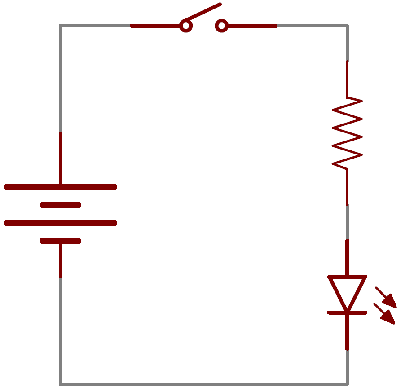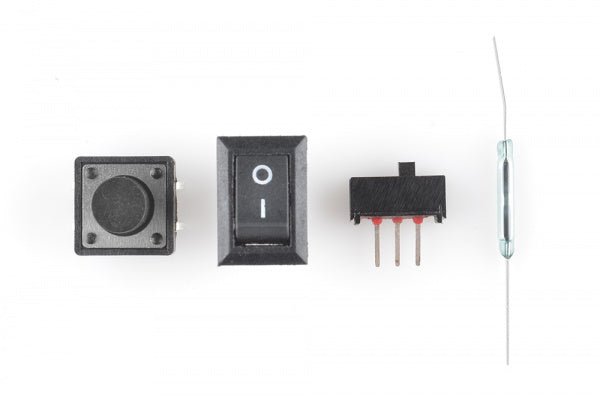2 Pin Push Button Switch
Tax included.
Switches don't require any fancy equations to evaluate. All they do is select between an open circuit and a short circuit. Simple. But how could we live without buttons and switches!...
Availability : In StockIn StockOut of stockCategories:
Development Boards
Switches don't require any fancy equations to evaluate. All they do is select between an open circuit and a short circuit. Simple. But how could we live without buttons and switches! What good is a blinky circuit with no user input? Or a deadly robot with no kill switch What would our world be without with big red buttons you should never ever press
What is a Switch
A switch is a component which controls the open-ness or closed-ness of an electric circuit. They allow control over current flow in a circuit (without having to actually get in there and manually cut or splice the wires). Switches are critical components in any circuit which requires user interaction or control.
A switch can only exist in one of two states: open or closed. In the?off?state, a switch looks like an open gap in the circuit. This, in effect, looks like an?open circuit, preventing current from flowing.
In the on state, a switch acts just like a piece of perfectly-conducting wire. A short. This closes the circuit, turning the system on and allowing current to flow unimpeded through the rest of the system.
A circuit diagram with an LED, resistor, and a switch. When the switch is closed, current flows and the LED can illuminate. Otherwise no current flows, and the LED receives no power.
There are tons and tons of switches out there: toggle, rotary, DIP, push-button, rocker, membrane, the list just goes on and on. Each of those switch types has a set of unique characteristics to differentiate it from others. Characteristics like what action flips the switch, or how many circuits the switch can control. Next up, well go over some of the more basic switch characteristics.
Defining Characteristics
Actuation Method
In order to change from one state to another, a switch must be actuated. That is, some sort of physical action must be performed to flip the switch's state. The actuation-method of a switch is one of its more defining characteristics.
Some examples of switch types.? push button ,? rocker? slide and? magnetic
Switch actuation can come from pushing, sliding, rocking, rotating, throwing, pulling, key-turning, heating, magnetizing, kicking, snapping, licking,?any physical interaction which can cause the mechanical linkages inside the switch to come into, or go out of, contact.





